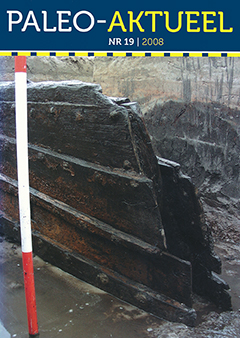Akkers gearchiveerd in muren. Onderzoek naar Romeinse graanverbouw in Karanis (Egypte)
Samenvatting
The walls and fields of Karanis (Egypt): botanical remains in building materials reflecting Roman agriculture. Off-site vegetation of cereal fields and off-site agricultural practices can be inferred from, among other things, botanical remains in building materials such as mud bricks, mortar and plaster. This was tested on samples from the Graeco-Roman site of Karanis, situated in the Fayum in Egypt. It appeared that chopped straw and chaff and an overwhelming quantity of durum-wheat rachis nodes were present, as well as arable weeds; these represent the upper layers of a cereal field. Water plants and low weeds were present as well, representing the soil layer of a cereal field and entering the building materials via the clay used. Possible kitchen waste was also found, as a deliberate or accidental addition. Thus building materials can be used to infer agricultural practices, although the interpretation of botanical remains can be complicated.

